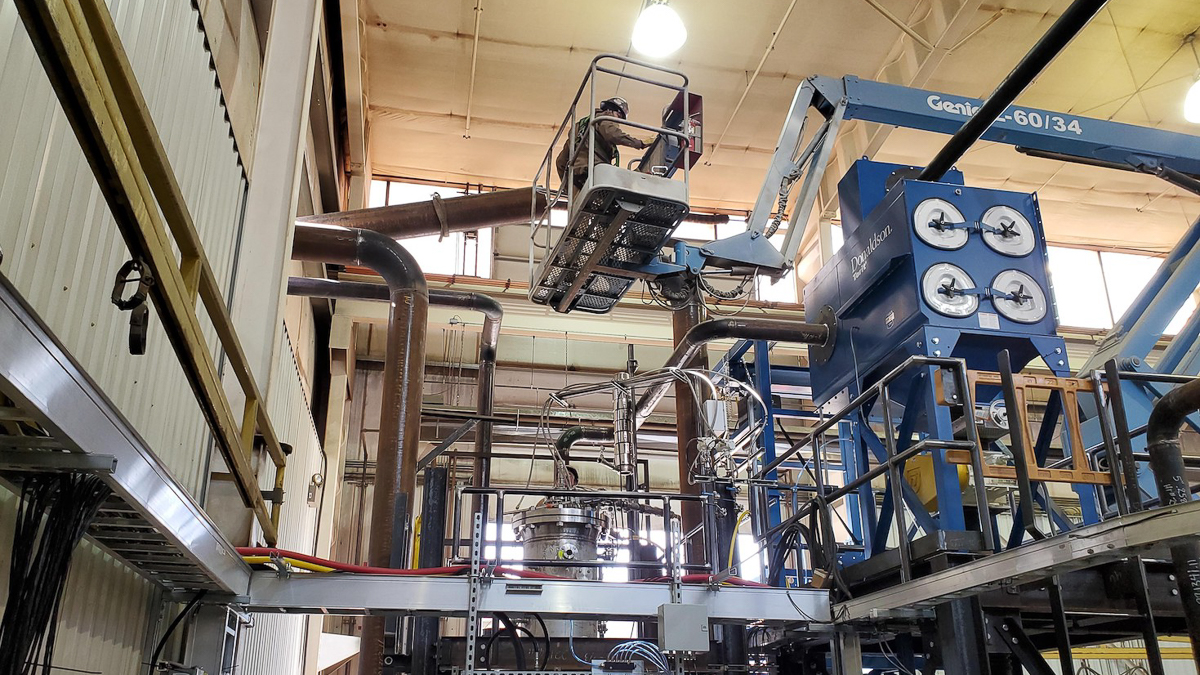An industry this large will take dozens of new innovations and companies—plenty of companies are at work on cement alternatives.
This article originally appeared on GreenBiz.com as part of our partnership with GreenBiz Group, a media and events company that accelerates the just transition to a clean economy.
The case for reducing emissions related to concrete production is solid and building, especially given the material’s central role in all the new projects going on globally. From a revenue standpoint, the construction industry is projected to reach $14.4 trillion by 2030, double its sales in 2020. According to one estimate, if you were to aggregate all that activity on a weekly basis, it would account for a city the size of Paris.
Here’s the number that should really give you pause: About 8% of the carbon dioxide emissions produced annually are associated with producing cement, the binding agent for the world’s most popular building material. Currently, we’re mixing up about 4.4 billion metric tons of the stuff. And, as emerging economies construct cities, that volume will only grow.
Forward-thinking companies from the construction sector are building the framework for action. For example, the industry’s high emissions profile was a primary motivation behind the creation of ConcreteZero, an initiative set up by the nonprofit Climate Group in partnership with the World Business Council for Sustainable Development and the World Green Business Council.
About 8% of the carbon dioxide emissions produced annually are associated with producing cement, the binding agent for the world’s most popular building material.
At its launch in early July, the program represented 17 major concrete buyers who agreed to source 100% net zero concrete by 2050. There are interim goals, including pledges to buy low-emission concrete for 30% of projects by 2025 and 50% by 2030. Some of the U.K.’s most prominent builders, engineering and architecture firms are among the companies that have signed up, including Skanska UK, Clancy Group and Canary Wharf Group, as well as global organizations including Ramboll, Thornton Tomasetti and WSP.
“It’s time for concrete targets to reduce carbon emissions in years, not decades,” said Jen Carson, head of industry at Climate Group. “ConcreteZero is signaling to the industry that the biggest buyers want it to innovate and act now on emissions. Concrete and steel emit as much as all road transport globally, and demand is going up. We won’t address the climate crisis without big, bold measures on industry.”
Where are those big, bold actions coming from? Plenty of climate tech entrepreneurs are vying to offer solutions, including the Global XPrize contest winner, CarbonCure, which is sequestering captured CO2 into concrete.
Another noteworthy player is Terra CO2 Technology, which recently disclosed a $46 million Series A round co-led by Breakthrough Energy Ventures, the prominent early-stage fund led by Bill Gates and other well-known investors, and LenX, which leads technology, innovation and strategic investments for Lennar (one of the biggest U.S. home builders). This news marks Breakthrough’s second investment into Terra CO2, bringing the company’s total backing to $61 million.
The startup, based in Golden, Colorado, aims to replace Portland cement with “cementitious materials” produced from silicate-type feedstocks that are more abundantly available and can be sourced closer to the point of production — granite, sedimentary rocks including glacier and tidal deposits, basalt and mining waste streams. Its first products will include Opus SCM (Supplementary Cementitious Material) and Opus BCM (Blended Cementitious Materials).
The company claims that for “every ton of Portland cement displaced by a Terra product, a 70% reduction in CO2 emissions is achieved.” It also promises to cut related nitrogen oxide emissions, which pose serious threats to human health, by 90%.
“Cement production is one of the largest contributors to carbon emissions globally, presenting an immediate need for a high-quality, low-CO2 alternative that won’t disrupt our supply chains or current infrastructures,” said Carmichael Roberts, managing director at Breakthrough. “Terra’s technology has unlocked just that, creating a new method of production that will deliver more sustainable alternative cement without compromising performance or quality.”
“I have zero interest in introducing something that is not cost-competitive.”
Plenty of companies are working on cement alternatives. Terra CO2 CEO Bill Yearsley, who has more than four decades of experience in the construction materials sector, said that what makes his company unique is its ability to source from a variety of feedstocks that can be sourced close to urban markets. The approach has been tested and validated by third parties, including environmental consulting firm Braun Intertec and binder testing firm WesTest.
Yearsley said Terra CO2’s production model helps cut down on the transportation needed to move the materials. The company envisions setting up small plants “like a mini steel mill” that can be located close to existing quarries and mines, leveraging existing supply chains. “I have zero interest in introducing something that is not cost-competitive,” Yearsley told me.
The new capital will help fund Terra CO2’s first commercial plant, which breaks ground in 2023 and will be capable of producing up to 250,000 tons of product annually. The company is operating pilot facilities in British Columbia and Colorado. It is exploring several models for scaling production, Yearsley said, focused on North America for now.
When I asked Yearsley about the wide array of startups pitching low-carbon concrete and cement technologies, he embraced the abundance of research and development, noting that addressing an industry this large will take dozens of new innovations and companies. “If anyone is arrogant enough to say they are going to be the only one around, they don’t know what they are talking about,” he said.


